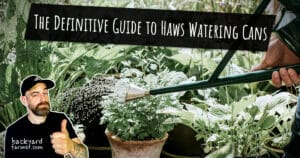Table of contents
- Introduction
- How Does Aeroponics Work: A Detailed Explanation
- How Does Aeroponics Work?
- Benefits of Using Aeroponics
- Benefits of Using Aeroponics
- Other Benefits:
- Aeroponics vs Hydroponics vs Traditional Farming
- Setting Up Your Own Aeroponic System
- Common Plants Grown with Aeroponics
- Challenges and Considerations
- Conclusion: Summary and Final Thoughts
Introduction
As an experienced gardener, I often get asked, ‘How does aeroponics work?’ and the answer lies in its innovative use of mist instead of soil. Imagine growing plants without soil, using minimal water, and still achieving faster, healthier growth.
This isn’t a futuristic concept—it’s a reality that’s transforming how we grow food. In this guide, I’ll walk you through how aeroponics works, its benefits, and how you can set up your own system to take advantage of this revolutionary technique. Ready to elevate your gardening game? Let’s dive in!
How Does Aeroponics Work: A Detailed Explanation
Definition and Explanation of Aeroponics
Aeroponics is a method of growing plants without soil, using nutrient-rich mist sprayed directly onto the roots. This technique allows for faster growth by optimizing oxygen absorption and nutrient uptake.
- Key Features:
- No soil required, nutrients delivered through mist.
- Increased oxygen exposure due to roots being suspended in air.
- Ideal for fast, efficient growth in controlled environments.
Key Differences Between Aeroponics and Hydroponics
Aeroponics and hydroponics are both soil-free systems, but they differ in their methods of nutrient delivery and oxygen availability.
| Aspect | Aeroponics | Hydroponics |
| Nutrient Delivery | Mist sprayed onto roots | Roots submerged in nutrient solution |
| Oxygen Exposure | High, as roots are suspended in air | Limited, due to submersion in water |
| Water Efficiency | Uses 90% less water than soil farming | More water-efficient than traditional soil methods |
| Maintenance | Requires precise control and regular upkeep | Easier to maintain but still requires monitoring |
| Growth Speed | Faster due to optimal oxygen and nutrient intake | Slower compared to aeroponics |
Overview of the Aeroponic Nutrient Mist System
An aeroponic system uses a fine mist to deliver nutrients to exposed plant roots, maximizing resource efficiency.
- System Highlights:
- Nutrient-rich mist sustains plant growth.
- Water use is reduced by up to 90%.
- Requires precise control of misting and nutrient levels.
How Does Aeroponics Work?
How Plants Absorb Nutrients via Misting
In aeroponics, plants receive nutrients through a fine mist that is sprayed directly onto their roots. This mist contains all the essential nutrients dissolved in water, which allows for direct absorption by the roots. When exploring how does aeroponics work, it’s important to understand how plants absorb nutrients through misting.
- Key Process:
- The mist is sprayed at timed intervals, ensuring the roots receive adequate moisture and nutrients.
- Roots are fully exposed, promoting better oxygen absorption, which accelerates growth.
The Role of Air in Plant Root Oxygenation
Aeroponics offers a significant advantage by keeping the roots suspended in the air, ensuring they have constant access to oxygen. This process enhances nutrient uptake, making it more efficient than traditional soil or hydroponic methods.
- Oxygenation Benefits:
- Increased oxygen availability improves the plant’s metabolism.
- The combination of misting and oxygen boosts the plant’s ability to absorb nutrients, leading to faster growth.
Benefits of Mist-Based Nutrient Delivery Over Traditional Soil Methods
Aeroponics uses significantly less water than traditional soil-based farming, while promoting quicker, healthier growth. With direct access to oxygen and nutrients, plants thrive in this controlled environment. To fully understand how does aeroponics work, it’s essential to examine how plants absorb nutrients via misting, providing them with all necessary elements for growth without the use of soil.
- Advantages:
- Water efficiency: Up to 90% less water used than in traditional farming.
- Faster growth: Enhanced oxygen levels lead to faster nutrient absorption and plant development.
- Space-saving: Vertical aeroponic systems require less space, making them ideal for urban or indoor farming.
Benefits of Using Aeroponics
Water Conservation and Efficiency
One of the key advantages of aeroponics is its remarkable water efficiency. By using a fine mist to deliver nutrients directly to the roots, aeroponics dramatically reduces water consumption.
- Key Points:
- Uses up to 90% less water compared to traditional soil farming.
- Water is recirculated, reducing waste and ensuring efficient use.
Faster Plant Growth
Aeroponics promotes faster plant growth due to increased oxygen exposure and direct nutrient absorption. The combination of oxygen and nutrient mist helps plants grow healthier and faster.
- Growth Benefits:
- Increased oxygen levels at the roots speed up metabolic processes.
- Plants absorb nutrients more quickly, leading to faster growth cycles.
Minimal Space Requirements
Aeroponic systems can be designed vertically, allowing you to grow more plants in less space. This is particularly beneficial for urban and indoor environments.
- Space-Saving Advantages:
- Vertical setups make it easy to grow plants in small areas.
- Perfect for urban farming and indoor gardens where space is limited.
Other Benefits:
- Reduced risk of soil-borne diseases since no soil is used.
- Easier control of nutrient levels, leading to optimized growth.
Benefits of Using Aeroponics
Water Conservation and Efficiency
One of the key advantages of aeroponics is its remarkable water efficiency. By using a fine mist to deliver nutrients directly to the roots, aeroponics dramatically reduces water consumption.
- Key Points:
- Uses up to 90% less water compared to traditional soil farming.
- Water is recirculated, reducing waste and ensuring efficient use.
Faster Plant Growth
Aeroponics promotes faster plant growth due to increased oxygen exposure and direct nutrient absorption. The combination of oxygen and nutrient mist helps plants grow healthier and faster.
- Growth Benefits:
- Increased oxygen levels at the roots speed up metabolic processes.
- Plants absorb nutrients more quickly, leading to faster growth cycles.
Minimal Space Requirements
Aeroponic systems can be designed vertically, allowing you to grow more plants in less space. This is particularly beneficial for urban and indoor environments.
- Space-Saving Advantages:
- Vertical setups make it easy to grow plants in small areas.
- Perfect for urban farming and indoor gardens where space is limited.
Other Benefits:
- Reduced risk of soil-borne diseases since no soil is used.
- Easier control of nutrient levels, leading to optimized growth.
Aeroponics vs Hydroponics vs Traditional Farming
Comparison of Growth Speed, Water Usage, and Crop Yield
When comparing aeroponics, hydroponics, and traditional soil farming, each method offers distinct advantages in growth speed, water use, and yield. Here’s how they differ:
- Growth Speed:
- Aeroponics: Fastest growth due to optimized oxygen and nutrient delivery.
- Hydroponics: Slower than aeroponics but faster than soil farming.
- Traditional Farming: Slowest growth due to environmental dependencies like soil quality and weather.
- Water Usage:
- Aeroponics: Uses up to 90% less water.
- Hydroponics: Water-efficient but still consumes more than aeroponics.
- Traditional Farming: Requires significant water, with much lost to evaporation and runoff.
- Crop Yield:
- Aeroponics: High yield per square foot due to vertical setups and efficient nutrient delivery.
- Hydroponics: Moderate to high yield depending on system setup.
- Traditional Farming: Variable yield, largely dependent on soil quality and environmental factors.
Pros and Cons of Each Method
| Method | Pros | Cons |
| Aeroponics | – High water efficiency | – Requires precise nutrient and mist control |
| – Fastest growth rate | – Equipment can be expensive to maintain | |
| – Saves space with vertical farming | ||
| Hydroponics | – Water-efficient | – Slower growth compared to aeroponics |
| – Easier to maintain than aeroponics | – Requires careful monitoring of water quality | |
| Traditional Farming | – Low startup costs | – High water usage |
| – Easier to manage on a large scale | – Dependent on environmental conditions |
Which System Is Best for Specific Types of Plants?
So, how does aeroponics work in comparison to traditional farming methods? Each system has its strengths depending on the types of plants grown:
- Aeroponics: Best suited for leafy greens, herbs, and strawberries, which benefit from the faster growth and efficient use of water and nutrients.
- Hydroponics: Great for a wide variety of crops like tomatoes, cucumbers, and peppers, which do well in water-based systems.
- Traditional Farming: Still ideal for larger, deep-rooting crops like potatoes, carrots, and corn that require soil for optimal growth.
If you’re interested in exploring more about growing methods, check out our detailed comparison on hydroponics or soil for vegetables, which dives into the pros and cons of each system and how they affect plant growth.
Setting Up Your Own Aeroponic System
Step-by-Step Guide to Building an Aeroponic System
Setting up your own aeroponic system is simpler than it seems. By following a few key steps, you can have an efficient, water-saving setup that delivers high-yield results. To fully understand how aeroponics works, setting up your own system can help demonstrate the process firsthand.
- Step 1: Choose a Setup
- Decide between a DIY aeroponic system or a pre-built one.
- Consider available space, budget, and plant types.
- Step 2: Gather Essential Equipment
- Nutrient Reservoir: Holds the nutrient solution.
- Misting System: Pumps and sprays the solution onto the roots.
- Plant Holders: Secure plants in place with their roots exposed.
- Step 3: Set Up the Misting System
- Install misting nozzles to spray the nutrient-rich mist at regular intervals.
- Ensure the mist covers all roots evenly for optimal nutrient absorption.
- Step 4: Install Grow Lights (If Indoors)
- Use full-spectrum grow lights to replicate sunlight for indoor systems.
- Ensure plants receive at least 12-16 hours of light daily.
- Step 5: Prepare and Monitor Nutrient Solution
- Mix water with the required nutrients for your plants.
- Regularly check and adjust nutrient levels, pH balance, and misting intervals to ensure healthy plant growth.
Required Equipment
- Nutrient Reservoir: Holds the nutrient solution and delivers it to the misting system.
- Misting Nozzles: Create the fine mist that nourishes plant roots.
- Water Pump: Delivers water from the reservoir to the nozzles.
- Timer: Automates the misting intervals for efficient watering.
- Grow Lights: (For indoor systems) Provide essential light for photosynthesis.
Tips for Maintaining the System
- Regularly clean the misting nozzles to prevent clogs.
- Monitor the water and nutrient levels daily.
- Check the system for leaks or misting issues that could disrupt plant growth.
Troubleshooting Common Issues
- Clogged Nozzles: Clean the nozzles regularly with vinegar or replace them if they stop misting.
- Nutrient Imbalance: Regularly test the pH and nutrient concentration of the water to prevent deficiencies or toxicity.
- Inconsistent Mist Coverage: Ensure that all roots are exposed to the mist by adjusting the nozzle placement or misting intervals.
Common Plants Grown with Aeroponics
Overview of Popular Plants for Aeroponics
Aeroponics is versatile and supports a wide variety of plants, particularly those that benefit from efficient nutrient absorption and faster growth. Here are some of the most commonly grown plants in aeroponic systems:
- Leafy Greens:
- Lettuce, spinach, kale, and arugula thrive in aeroponic systems due to their shallow roots and fast growth cycle.
- Herbs:
- Basil, mint, oregano, and parsley grow well in aeroponics. These plants benefit from the controlled environment and quick nutrient uptake.
- Fruits:
- Strawberries, tomatoes, and cucumbers are popular in aeroponic systems. The efficient nutrient delivery ensures high yields and healthy growth.
Special Considerations for Certain Crops
Different plants have specific needs, and aeroponic systems can be adjusted to accommodate them.
- Tomatoes: Require sturdy support as they grow taller, and misting intervals may need to be adjusted as they mature.
- Strawberries: Benefit from frequent misting and thrive in the vertical growing space aeroponics offers.
- Leafy Greens: Need consistent misting and moderate light to grow quickly and maintain freshness.
How to Optimize the System for Different Plant Varieties
Each plant variety may require specific adjustments in misting frequency, nutrient concentration, and light exposure.
- Misting Frequency: Leafy greens may need shorter misting intervals, while fruiting plants like tomatoes may need less frequent but more concentrated misting.
- Nutrient Solution: Customize the nutrient mix based on the plant’s growth stage and type. Leafy greens need more nitrogen, while fruiting plants require higher potassium levels.
- Lighting Requirements: Adjust grow lights according to the plant variety. Leafy greens thrive under moderate light, while fruiting plants like tomatoes need intense, prolonged light exposure.
Challenges and Considerations
“For a deeper look at the latest innovations in aeroponics and sustainable farming technologies, visit NASA’s overview of aeroponics, which highlights how this method is used in space missions.
Maintenance and Energy Costs
Aeroponics systems require regular maintenance and can have higher upfront and ongoing costs than traditional farming methods. From monitoring the misting system to maintaining nutrient levels, the system needs attention to function efficiently.
- Key Challenges:
- Equipment: Regular cleaning and checking of misting nozzles, pumps, and nutrient reservoirs.
- Energy Costs: Aeroponics relies heavily on electricity for misting systems and, in indoor setups, for grow lights.
- Initial Setup Cost: Professional systems can be expensive, though DIY solutions are more budget-friendly.
Potential Technical Issues
Aeroponics systems rely on technology to function smoothly. Equipment failure can significantly impact plant health, so it’s essential to anticipate and address technical challenges.
- Common Issues:
- Pump Failure: If the water pump fails, plants won’t receive nutrients, leading to rapid decline.
- Clogged Nozzles: Nutrient solution buildup can clog misting nozzles, restricting mist flow.
- Power Outages: Loss of power can halt the misting system, which can affect plant growth, especially for those with high nutrient demands.
Managing Nutrient Concentrations for Optimal Plant Health
Aeroponics requires careful management of nutrient levels to ensure plants grow healthily. Incorrect nutrient concentration can lead to deficiencies or toxicities in plants.
- Best Practices:
- Regularly test the pH and nutrient levels to maintain a balanced environment.
- Adjust the nutrient solution based on plant type and growth stage.
- Keep nutrient reservoirs clean to avoid contamination.
Conclusion: Summary and Final Thoughts
In summary, how aeroponics works is by delivering nutrients through mist, optimizing plant growth. Aeroponics offers a modern, efficient, and sustainable solution for growing plants. With benefits such as faster growth, reduced water usage, and minimal space requirements, it’s an excellent choice for those seeking an innovative farming method.
Whether you’re growing leafy greens, herbs, or fruits, aeroponics can yield impressive results with proper maintenance.By setting up an aeroponic system, you can cultivate plants indoors or in urban spaces while saving water and maximizing growth potential. Ready to try it? Explore more tips and guides on The Backyard Farmer to start your aeroponic journey today!





